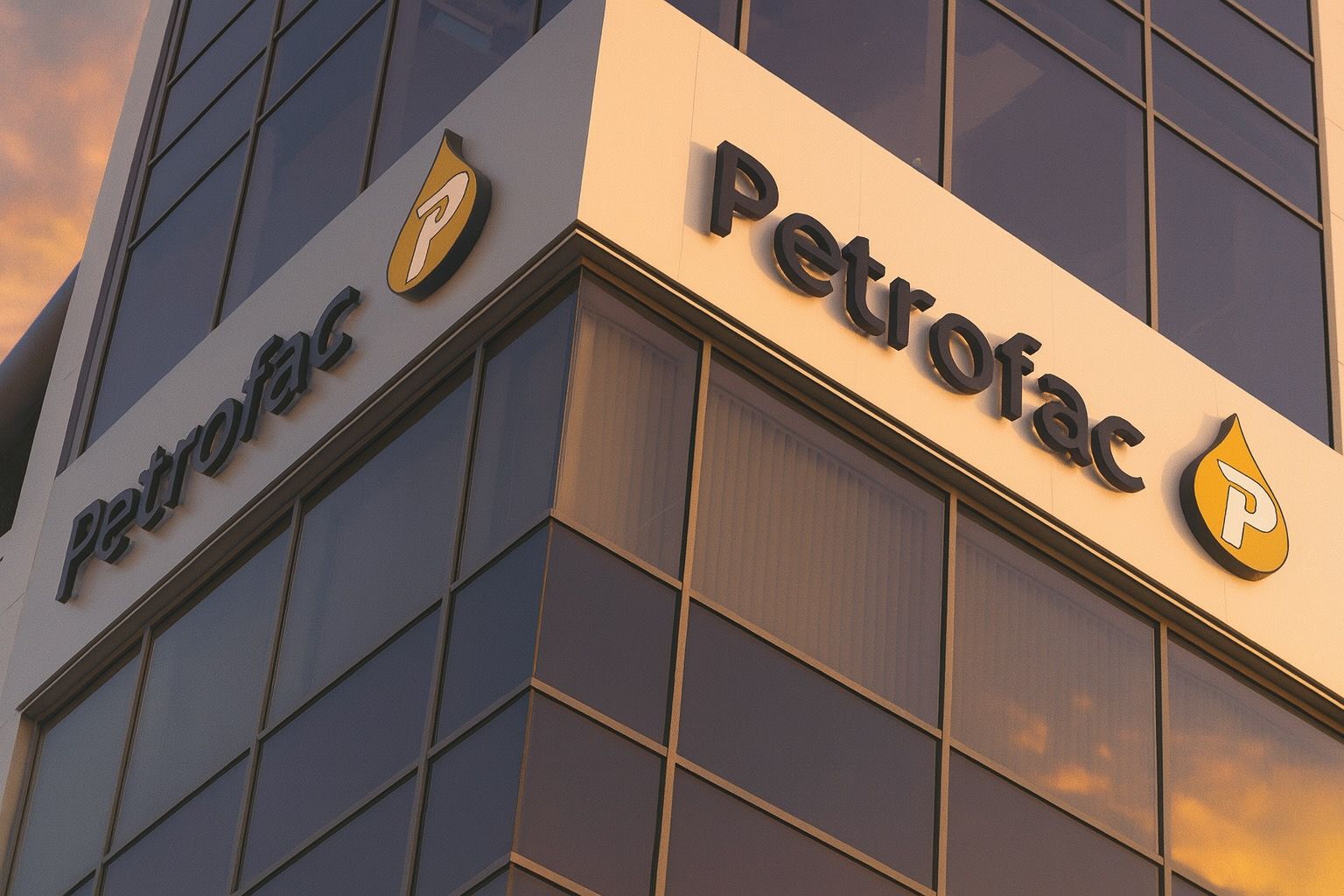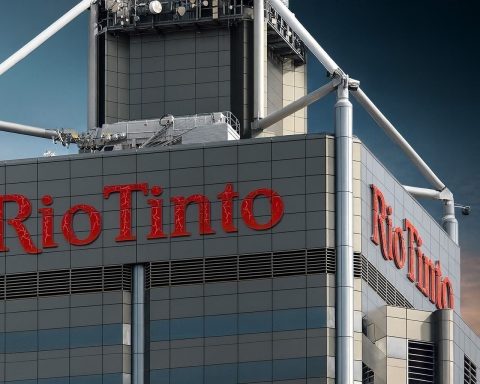- Petrofac files for administration: UK oilfield services firm Petrofac has applied to the High Court to appoint administrators after emergency talks failed, placing over 2,000 jobs in Scotland at risk [1] [2]. The company’s operations will continue trading during the process while restructuring or a sale is pursued [3].
- Contract loss triggers collapse: The sudden cancellation of a €13 billion offshore wind contract by Dutch grid operator TenneT dealt Petrofac a fatal blow [4]. TenneT terminated Petrofac’s role in a 2 GW windfarm grid project last week, citing the firm’s failure to meet obligations [5]. Petrofac’s board admitted its rescue plan was “no longer deliverable” after losing this key contract [6].
- £6 billion to nearly zero:Once valued at over £6 billion, Petrofac’s market worth collapsed to about £20 million by May 2025 [7]. Trading in its London-listed shares was suspended, and existing shareholders are expected to be wiped out – the company warned that its restructuring would leave “no residual value” for shareholders [8] [9].
- Hope for a buyer: Administrators from Teneo are standing by to manage the insolvency. Insiders say a buyer for Petrofac’s North Sea business could emerge within days [10], which might save portions of the company. The administration filing is limited to Petrofac’s holding company, with operating subsidiaries still running as talks continue with creditors and potential suitors [11].
- Wider industry alarm: Petrofac’s collapse has sparked political and industry concerns about the North Sea energy sector’s future. UK Energy Secretary Ed Miliband was briefed on the crisis over the weekend [12]. Trade groups warn that heavy taxes and lack of new drilling licenses are “accelerating the decline” of the North Sea oil and gas industry and its supply chain [13]. Offshore oil jobs are being lost at roughly 1,000 per month amid the transition to clean energy [14].
Petrofac’s Collapse into Administration
Petrofac, a leading services provider to the oil, gas and renewable energy industry, filed for administration on 27 October 2025, after last-ditch restructuring talks fell apart [15]. The company confirmed it has applied to court to appoint administrators, effectively admitting it cannot meet its obligations without protection from creditors [16]. Petrofac stressed that the insolvency filing affects only its top holding entity – all operating subsidiaries will continue to trade while “alternative options” are explored [17] [18]. In an announcement, the firm said administrators will work with management to “preserve value, operational capability and ongoing delivery” across Petrofac’s projects [19].
Over 2,000 jobs – mostly in Scotland – hang in the balance as the company collapses [20]. Petrofac’s UK business, based in Aberdeen, supports offshore platforms for majors like BP and Shell [21]. It employs around 7,300 people globally, including ~2,000 at its North Sea hub [22]. For those workers and their families, the sudden move into administration has unleashed uncertainty. However, there is a glimmer of hope: people close to Petrofac say they are “hopeful a buyer can be found swiftly” for its North Sea operations, possibly within days [23]. A quick sale of key assets to a rival or investor could preserve jobs and critical services in the region.
Energy Secretary Ed Miliband and other UK ministers were put on alert over the weekend as Petrofac’s troubles escalated [24]. Government officials engaged advisory firm Kroll to monitor the situation and coordinate a response [25]. Given Petrofac’s role in maintaining safety and operations on North Sea installations, a disorderly collapse would be disruptive [26]. Ensuring continuity – for example, through a managed sale – is a priority to avoid any impact on offshore energy production.
“It’s not the start to the week Ed Miliband… would have been hoping for: more than 2,000 private sector jobs in Scotland at risk from the collapse of Petrofac,” noted Sky News editor Mark Kleinman, adding that “the failure of a company once valued at more than £6 billion has been a long time coming.” [27] Petrofac’s downfall, while dramatic, did not happen overnight – it caps off years of financial strain and missed opportunities, which experts had been warning about.
Windfarm Contract Cancellation – The Final Straw
The immediate trigger for Petrofac’s insolvency was the loss of a massive offshore wind contract. In 2023, Petrofac (alongside partner Hitachi Energy) won a €13 billion deal from TenneT – the Dutch-German grid operator – to build six high-voltage offshore converter platforms for wind farms [28]. But on October 23, TenneT terminated Petrofac’s portion of the contract, citing Petrofac’s failure to meet key contractual obligations [29] [30]. This termination was a devastating blow: Petrofac’s management admitted that its restructuring plan was “no longer deliverable in its current form” after TenneT pulled out [31].
The TenneT contract was not only a cornerstone of Petrofac’s future revenues – it was also central to the company’s pivot toward renewable energy projects. Losing it meant immediate financial strain (potentially hundreds of millions in lost orders) and a loss of credibility with lenders. Petrofac had already been working on a complex debt restructuring for over a year; as one industry source told the press, “the loss of this major contract eliminated any remaining prospects for a solvent restructuring”, forcing the board to consider administration [32].
Notably, Petrofac’s difficulties on the TenneT project reflected wider challenges in the energy contracting sector. Rising costs, supply chain delays, and tight margins on big infrastructure projects have made life hard for contractors [33]. In Petrofac’s case, the firm was under pressure from cost overruns and slow client payments even before this incident [34]. TenneT’s decision to cut ties suggests Petrofac was unable to deliver on time or budget – a situation that also raises questions about how remaining work on those offshore grid projects will proceed (Hitachi and other partners may need to pick up the slack).
Years of Debt, Scandal and Decline
Petrofac’s collapse is the culmination of a dramatic fall from grace. At its peak in 2012, Petrofac was worth over £6 billion and was seen as a crown jewel of British engineering [35]. The company, founded in 1981 in Texas, expanded rapidly in the 2000s, designing and operating oil platforms, refineries, and pipelines around the world [36]. But a series of setbacks over the last decade steadily eroded its finances:
- Ballooning debt: Petrofac took on large debt loads to finance projects, leaving it vulnerable when revenues fell. By 2024/25, debt servicing had become a major strain, and the company was struggling under the weight of its borrowings [37].
- Corruption scandal: A Serious Fraud Office (SFO) investigation hit Petrofac’s reputation hard. In 2021, the company pleaded guilty to failing to prevent bribery related to Middle East contracts, paying over £77 million in fines and penalties [38]. This not only drained cash but also made some clients and investors shun Petrofac. The stigma of the bribery case undermined Petrofac’s ability to win new contracts for years [39].
- Share price collapse: As its troubles mounted, Petrofac’s stock plummeted. By April 2025, the share price was so low that the entire company’s market capitalization was only around £20 million (down from billions) [40]. In May, amid restructuring talks, Petrofac’s shares were suspended from trading on the London Stock Exchange [41]. Equity investors have effectively lost everything – earlier this month Petrofac confirmed that under its restructuring plan, existing shareholders would be left with no value [42].
- Failed rescue attempts: Petrofac had been in restructuring discussions for well over a year [43]. In fact, the High Court approved a debt restructuring plan in May 2025 that aimed to wipe out a chunk of debt and inject $355 million of new funding [44]. However, that plan was overturned on appeal in July after objections from other contractors (related to a dispute over a refinery project) [45]. The collapse of the court-approved plan left Petrofac in limbo by autumn. By the time the TenneT contract was lost in October, Petrofac had no remaining lifeline – its creditors’ patience had run out.
Sky’s Mark Kleinman observed that Petrofac’s failure had been years in the making, and insiders agree. “This has been a long time coming” for a company that expanded too aggressively and was then hit by a perfect storm of low oil prices, legal troubles, and policy headwinds, one industry analyst noted [46]. The precipitous decline makes Petrofac one of the most high-profile casualties in the North Sea sector in recent memory, comparable to the collapse of drilling contractor Odebrecht Oil & Gas or other fallen industry giants.
Political and Industry Fallout
The downfall of Petrofac is sending shockwaves through the UK’s North Sea industry and political circles. The North Sea oil and gas sector was already under strain from aging fields and the transition to cleaner energy. Petrofac’s crisis underscores how fragile the supply chain has become, and has intensified the debate over government energy policy.
British lawmakers and industry groups have voiced alarm. Just last week, a Parliamentary committee warned that the government must avoid policies that “accelerate the decline” of North Sea oil and gas production [47] [48]. The committee’s report noted that job losses in Scotland’s oil and gas industry are exceeding the pace of new job creation in renewables [49] – a worrying trend as the country aims for a just transition. In line with this, the cross-party panel cautioned that the current Energy Profits Levy (windfall tax) on oil and gas companies “will accelerate the decline of the North Sea…industry and its supply chain” without reform [50].
Trade body Offshore Energies UK (OEUK) has quantified the trend: it says nearly 1,000 direct and indirect oil and gas jobs are being lost every month as investment dries up [51]. Deirdre Michie, the former OEUK chief, said this rate of losses “would be unacceptable in any other sector” and urged urgent action to restore confidence [52]. The North Sea Transition Authority also reports a slump in new drilling and project approvals [53].
At the heart of the controversy is the UK’s tax and licensing policy. The previous Conservative government imposed a windfall tax on oil & gas profits in 2022, which was later increased and extended by the current Labour government amid high energy prices [54]. Industry leaders argue this “punitive” tax regime and uncertainty over future drilling licenses are driving companies away [55] [56]. “Recent changes in policies and rising taxes…have driven away operators”, OilPrice reported of the North Sea climate, noting that firms warn the UK is becoming overly reliant on imported gas [57]. Indeed, multiple international oil companies have scaled back or exited UK operations, and projects have been put on hold due to the unstable fiscal regime [58].
The Labour government, which took office in early 2025, has pledged not to issue new North Sea oilfield licenses as part of its climate strategy. This stance has drawn criticism from labor unions and local MPs in Scotland, who fear it could cost thousands of jobs. Now, with Petrofac’s collapse, those tensions are on full display. “The potential collapse comes at a particularly sensitive time for Ed Miliband,” notes K2 Partners, a restructuring consultancy, as he faces pressure to permit more North Sea drilling despite Labour’s green pledges [59]. The fragility of the North Sea’s supply chain – highlighted by Petrofac’s failure – is being seized upon by opposition voices calling for a more balanced approach to energy transition. They argue for incentivizing firms to keep investing in oil and gas infrastructure (to protect jobs and energy security in the interim) even as the country scales up renewables.
On the other hand, environmental groups and some economists say Petrofac’s downfall also illustrates the risk of clinging to a declining fossil fuel sector. They contend that the answer is not to double down on oil, but to invest more in renewables and retraining workers, so that future “Petrofacs” can emerge in clean energy fields. The coming months will likely see heated debate between those camps. Meanwhile, Miliband has ordered a review of what led to Petrofac’s collapse and how to assist affected workers [60]. There are even whispers that the Treasury may consider easing the windfall tax earlier than planned, to prevent further company failures – a move welcomed by industry if it happens.
What’s Next for Petrofac and the North Sea?
For Petrofac itself, the focus now shifts to finding a buyer or investors to salvage parts of the business. The appointed administrators (reportedly Teneo) will be examining Petrofac’s assets and contracts to see which can be sold off or restructured. Analysts expect that Petrofac will be broken up through the administration process, with various divisions potentially acquired by competitors or private equity [61]. “If Petrofac proceeds with administration, the company is expected to be broken up, with key contracts likely to be acquired by other industry players,” according to experts at K2 Partners [62]. Such sales could allow rivals to strengthen their North Sea presence while preserving some jobs as employees move with the contracts [63].
One immediate priority is Petrofac’s North Sea operations, which are critical to clients. There is market speculation that other oilfield service firms – for example, Wood Group or TechnipFMC – might be interested in acquiring Petrofac’s maintenance contracts and engineering teams in the North Sea. Any swift deal to take over these contracts could save a large number of the 2,000 threatened jobs, and ensure continuity for oil producers. People close to the matter suggest at least one potential buyer has already been in talks over the weekend [64]. We may see an announcement on a North Sea asset sale within days, if negotiations firm up.
Outside the North Sea, Petrofac also has operations in the Middle East, Asia, and elsewhere. Those units might be sold separately or restructured if they are still profitable. The Ad Hoc Group of bondholders and bank lenders that have been supporting Petrofac through this crisis will have a big say in any restructuring plan [65]. They had earlier agreed to forbearance and extended credit to give Petrofac breathing room [66]. Now, those creditors will likely end up owning whatever remains of Petrofac (if they convert debt to equity in a restructured entity) or they will recover money from selling its assets. Shareholders, unfortunately, are almost certain to be left with nothing, given the company’s liabilities [67].
In terms of timeline, administration is a court-driven process. Petrofac’s management and Teneo will aim to complete sales or restructuring by the end of the year if possible, to minimize uncertainty. The company’s statement indicates it is actively exploring “alternative options” with key stakeholders [68] – potentially a pre-pack administration where a buyer is lined up quickly. If no buyer for certain parts emerges, those parts of the business could face closure and layoffs in the coming months.
For the North Sea industry at large, Petrofac’s fall is a cautionary tale. It highlights the urgent need for a stable investment climate. Many are now calling on the government to use the upcoming Autumn Budget to signal support for the offshore sector – whether by adjusting the windfall tax, offering transition support for contractors, or accelerating offshore wind and carbon capture projects that can employ oilfield workers. “As many as 1,000 UK oil and gas jobs a month are being lost — this would be unacceptable in any other sector,” warned OEUK’s CEO David Whitehouse recently, urging “urgent fiscal reform” to stem the tide [69]. The North Sea Transition Authority is likewise consulting on new licensing and hoping to reassure investors by later this autumn [70].
In the coming weeks, expect close coverage of Petrofac’s administration process. Unions will be fighting to ensure employees are treated fairly and any purchaser honors their terms. The story also has geopolitical angles – for instance, could a foreign state-backed entity swoop in to buy Petrofac’s assets (similar to how foreign firms have acquired UK energy assets in the past)? The government will be keen to avoid critical infrastructure falling into unreliable hands. All these subplots make Petrofac’s collapse not just a corporate failure but a flashpoint in Britain’s energy transition saga.
Bottom Line: Petrofac’s collapse is a major blow to the UK’s offshore industry and a wake-up call about the challenges of transitioning away from fossil fuels. It puts 2,000+ jobs at immediate risk and raises tough questions about how to balance climate goals with maintaining energy security and employment. As one era of North Sea oil services seems to be ending with Petrofac’s downfall, the future of the region will depend on policies that encourage new investment – whether in cleaner energy or in squeezing more value from existing oil and gas fields. For now, all eyes are on the administrators to see if Petrofac’s legacy can be saved in pieces, or if this once-mighty company will be the latest casualty of an industry in upheaval.
Sources: Petrofac and Sky News announcements [71] [72]; Reuters and press reports [73] [74]; Oil & Gas industry analysis [75] [76]; Parliamentary and trade body data on North Sea jobs [77] [78].
References
1. www.ireland-live.ie, 2. news.sky.com, 3. www.reuters.com, 4. www.reuters.com, 5. www.reuters.com, 6. www.petrofac.com, 7. www.ireland-live.ie, 8. www.ireland-live.ie, 9. www.reuters.com, 10. news.sky.com, 11. www.reuters.com, 12. news.sky.com, 13. oilprice.com, 14. www.theguardian.com, 15. www.ireland-live.ie, 16. www.ireland-live.ie, 17. www.ireland-live.ie, 18. www.reuters.com, 19. news.sky.com, 20. www.ireland-live.ie, 21. www.ireland-live.ie, 22. www.ireland-live.ie, 23. news.sky.com, 24. news.sky.com, 25. www.k2-partners.com, 26. www.k2-partners.com, 27. news.sky.com, 28. www.reuters.com, 29. www.reuters.com, 30. www.ireland-live.ie, 31. www.petrofac.com, 32. www.k2-partners.com, 33. www.reuters.com, 34. www.reuters.com, 35. www.ireland-live.ie, 36. news.sky.com, 37. news.sky.com, 38. news.sky.com, 39. www.k2-partners.com, 40. www.ireland-live.ie, 41. www.ireland-live.ie, 42. www.reuters.com, 43. news.sky.com, 44. news.sky.com, 45. www.k2-partners.com, 46. news.sky.com, 47. oilprice.com, 48. oilprice.com, 49. oilprice.com, 50. oilprice.com, 51. www.theguardian.com, 52. oeuk.org.uk, 53. oilprice.com, 54. oilprice.com, 55. oilprice.com, 56. oilprice.com, 57. oilprice.com, 58. oilprice.com, 59. www.k2-partners.com, 60. www.unitetheunion.org, 61. www.k2-partners.com, 62. www.k2-partners.com, 63. www.k2-partners.com, 64. news.sky.com, 65. www.reuters.com, 66. www.reuters.com, 67. www.reuters.com, 68. www.petrofac.com, 69. oeuk.org.uk, 70. oilprice.com, 71. news.sky.com, 72. www.petrofac.com, 73. www.reuters.com, 74. www.ireland-live.ie, 75. oilprice.com, 76. www.k2-partners.com, 77. www.theguardian.com, 78. oilprice.com










